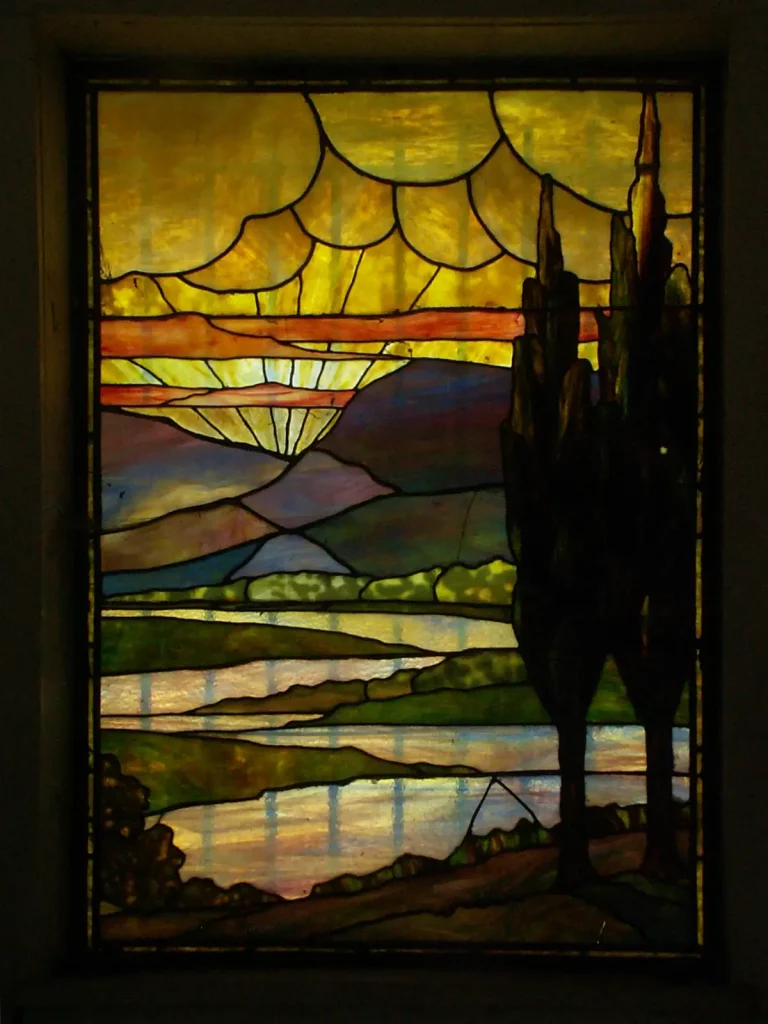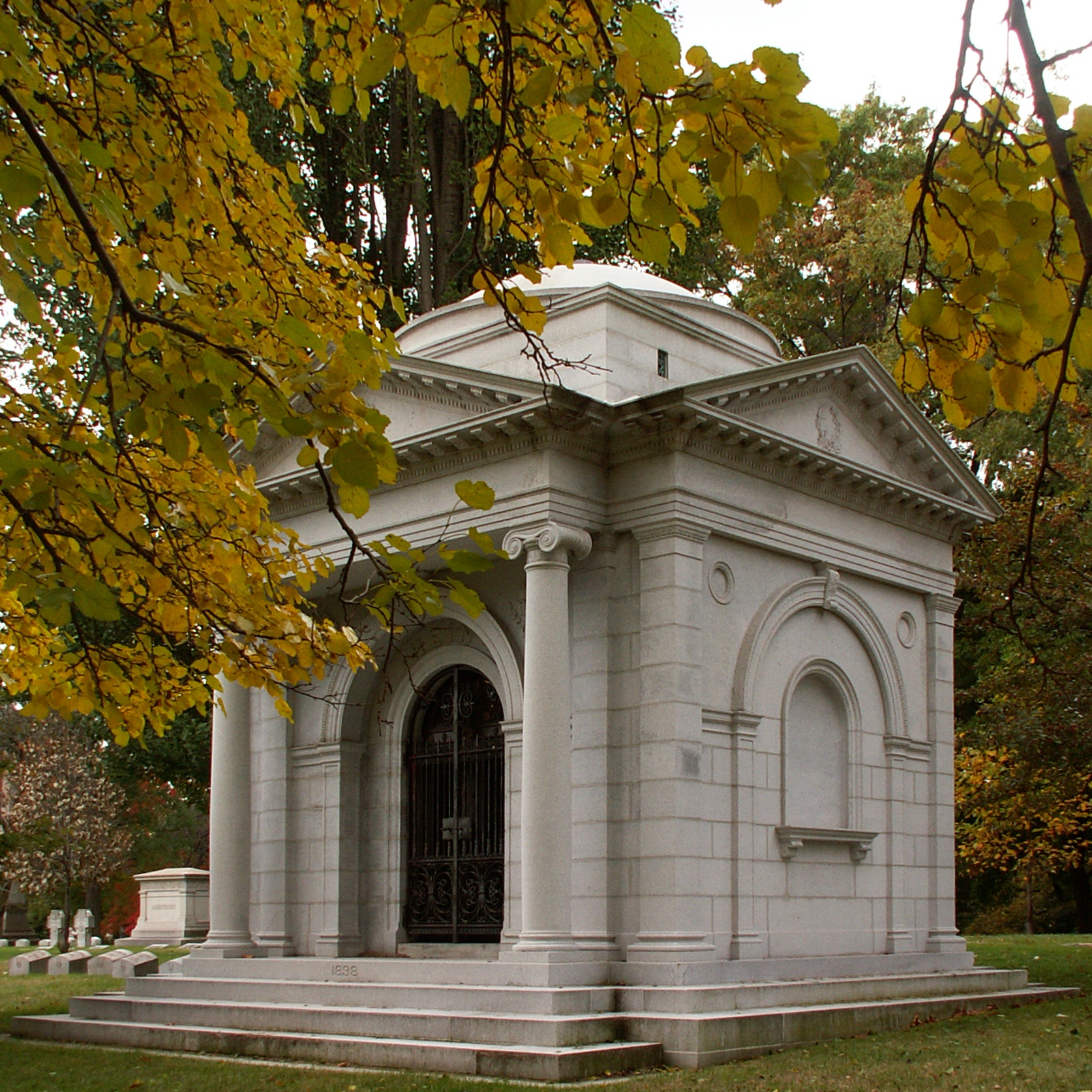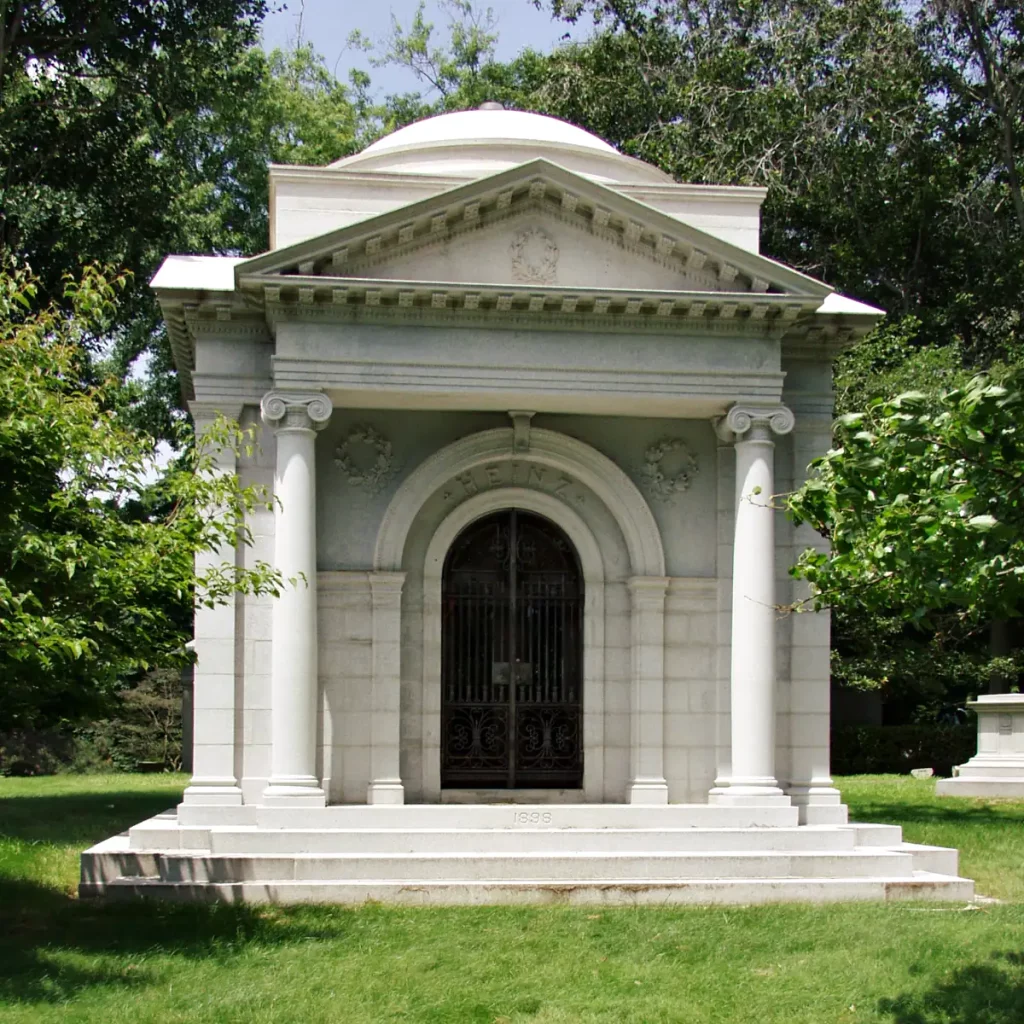

The monument to steel baron James B. Oliver and his family is one of the largest heaps of bronze in the Allegheny Cemetery. Four beautiful angels stand guard at the corners.





A simple little Doric temple with an exceptionally fine stained-glass window.


An elegant little Gothic chapel with a bit of Art Deco flair. The stained glass inside shows Charity distributing gifts to Music, Drama, and the Arts.



This magnificent Roman temple holds more dead people than any other mausoleum in the Homewood Cemetery, with an extensive basement accessible by a removable section of mosaic floor. (How’s that for a scene in a Gothic novel?) H. J. Heinz, the pickle and ketchup king, and generations of his descendants are buried here, including his great-grandson Senator John Heinz.

Addendum: The architects of the mausoleum were Vrydaugh & Wolfe, who also designed Warwick House for Howard Heinz.